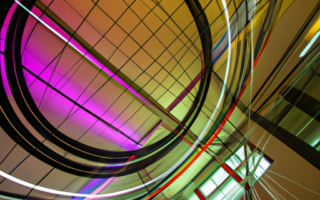Origins and Evolution of Conceptual Art
Conceptual art, a revolutionary movement in contemporary art, has greatly impacted the way we perceive and understand artistic expression. Originating in the mid-20th century, conceptual art challenged traditional notions of art, pushing the boundaries of creativity and emphasizing the power of ideas over traditional aesthetic concerns.
The origins of conceptual art can be traced back to the early 20th century when artists started to question the purpose and function of art. The Dada movement, with its rejection of conventional art forms and its focus on anti-art and absurdity, set the stage for conceptual art’s later development. Artists like Marcel Duchamp, known for his controversial ready-mades, where ordinary objects were transformed into art simply by the act of declaring them so, paved the way for the conceptual art movement.
However, it wasn’t until the late 1960s and early 1970s that conceptual art gained significant recognition and influence. Artists like Sol LeWitt, Joseph Kosuth, and Lawrence Weiner were at the forefront of this movement, advocating for ideas as the primary form of artistic expression. They challenged the traditional notion of the artwork as an object to be appreciated and instead focused on the underlying concepts and intellectual engagement.
Conceptual art rejected the idea of the artist’s hand as necessary for the creation of art, shifting the focus towards the concept and the execution of the idea. This allowed for a wide range of mediums to be used, including text, photography, installation, and performance art, as long as it communicated the intended idea or concept.
The evolution of conceptual art can be seen in its various manifestations over the years. In the 1980s, the movement expanded to incorporate political and social commentary, with artists using their work as a platform to address pressing issues of the time. This expansion further highlighted the power of ideas in driving artistic expression and demonstrated the potential for art to serve as a catalyst for change.
Today, conceptual art continues to evolve and challenge traditional notions of art. It remains a powerful force in the contemporary art world, encouraging viewers to engage with ideas and concepts on a deeper level. Whether through thought-provoking installations, provocative performances, or thoughtfully crafted text-based works, conceptual art pushes the boundaries of creativity and encourages us to question and explore the world around us.
Understanding the origins and evolution of conceptual art is crucial in appreciating its significance and impact on contemporary creative expression. By placing ideas at the forefront and challenging traditional aesthetic concerns, conceptual art has revolutionized the way we perceive and engage with art, opening up new possibilities for artistic expression.
The Role of Ideas in Conceptual Art
Conceptual Art: Understanding the Power of Ideas in Contemporary Creative Expression
Conceptual art is a form of contemporary artistic expression that prioritizes ideas over traditional aesthetic considerations. It emerged in the 1960s as a reaction against the emphasis on the physical aspects of art and instead focused on the conceptual framework that guided the creative process. In conceptual art, the role of ideas is paramount, as they become the driving force behind the artwork.
In traditional art forms, such as painting or sculpture, the aesthetic qualities of the artwork are often the main focus. Artists strive to create visually appealing compositions, experimenting with color, form, and technique. However, in conceptual art, the emphasis shifts towards the intellectual exploration of ideas and concepts. The physical form of the artwork becomes secondary, serving as a vehicle for conveying the artist’s ideas.
The role of ideas in conceptual art is multi-faceted. Firstly, ideas serve as the foundation for the artwork itself. Artists engage in extensive research and intellectual inquiry to develop concepts that are thought-provoking and meaningful. These ideas can stem from a wide range of sources such as philosophy, social issues, or personal experiences. The artist then translates these ideas into a visual or conceptual form, creating a piece that invites viewers to engage intellectually and emotionally.
Secondly, ideas in conceptual art challenge traditional notions of aesthetics and artistic skill. The focus on ideas opens up new possibilities for creative expression, breaking free from the constraints of materials and technical proficiency. Conceptual artists often employ various media such as installations, performance art, or even language-based works to convey their ideas. This versatility allows for a more inclusive and diverse artistic landscape, where the exploration of ideas becomes the driving force behind creating meaning.
Lastly, the role of ideas in conceptual art also extends to the viewer’s interpretation. As the artwork itself may not possess traditional aesthetic qualities, the viewer becomes an active participant in deciphering the underlying ideas and concepts. Each viewer brings their own experiences, beliefs, and perspectives, adding new layers of interpretation and meaning to the artwork. This engagement with ideas encourages critical thinking and stimulates dialogue, making conceptual art a powerful platform for social and political discourse.
In conclusion, the role of ideas in conceptual art is fundamental to the creative process as well as the reception of the artwork. By prioritizing ideas over aesthetics, conceptual art challenges traditional notions of artistic expression, opening up new possibilities for creative exploration. It invites viewers to engage intellectually, encouraging critical thinking and sparking conversations. In an increasingly complex and interconnected world, conceptual art serves as a powerful tool for understanding and interpreting contemporary issues through the power of ideas.
Examining the Impact of Conceptual Art on Contemporary Culture
Conceptual Art is a revolutionary movement in the art world that emerged in the 1960s and continues to make a significant impact on contemporary culture. It challenges traditional concepts of art by emphasizing the power of ideas and the creative process over the final physical form of the artwork. Understanding the impact of Conceptual Art on contemporary culture is crucial to comprehending the evolution of creative expression in the modern era.
One of the key aspects when examining the impact of Conceptual Art on contemporary culture is its ability to break down barriers and redefine the boundaries of art. Prior to the emergence of Conceptual Art, art was primarily associated with aesthetic value and craftsmanship. However, this movement shifted the focus towards concepts, ideas, and the thought process behind the artwork.
Conceptual Art has challenged the notion that art must be visually appealing or skillfully executed to be considered valuable. It has opened the doors for various unconventional mediums and techniques, such as performance art, installations, and text-based works. This expansion of artistic possibilities has allowed artists to explore and express their ideas in innovative ways, creating a diverse and dynamic contemporary art scene.
Another significant impact of Conceptual Art on contemporary culture is its ability to engage viewers intellectually and emotionally. By prioritizing ideas and concepts, Conceptual Art prompts viewers to think critically, question their assumptions, and engage in a deeper level of introspection. This active engagement with art encourages a more profound understanding of oneself and the world, leading to personal growth and cultural transformation.
Furthermore, Conceptual Art has played a vital role in initiating crucial discussions and debates on various social, political, and cultural issues. Artists often use their work as a platform to address topics such as identity, gender, race, inequality, and environmental concerns. Through their thought-provoking artworks, Conceptual artists challenge societal norms, raise awareness, and encourage dialogue, ultimately shaping and influencing contemporary culture.
In conclusion, Conceptual Art has had a profound impact on contemporary culture by redefining the boundaries of art, engaging viewers intellectually and emotionally, and sparking important conversations on social issues. Its emphasis on ideas and the creative process has revolutionized the art world, leading to a more inclusive and expansive understanding of artistic expression in the modern era.
Exploring the Boundaries of Creativity in Conceptual Art
Exploring the boundaries of creativity is a fundamental aspect of conceptual art, a movement that emerged in the 1960s and has since revolutionized contemporary creative expression. Conceptual art is characterized by a focus on the power of ideas rather than the physical execution of traditional art forms. It challenges the conventional notions of art by emphasizing the importance of concept, process, and context.
Conceptual artists aim to push the limits of creativity by exploring new ideas, concepts, and methodologies. They question the traditional boundaries of art, often blurring the lines between different disciplines and mediums. This multidisciplinary approach allows artists to experiment with various forms of expression, including installations, performances, photography, and even language-based works.
One of the key aspects of exploring boundaries in conceptual art is the rejection of traditional art objects and the embrace of ephemeral and immaterial elements. This shift in focus allows artists to explore abstract and intangible concepts that go beyond the limitations of physical objects. By doing so, they challenge the viewer’s perception of what art can be and provoke critical thinking and dialogue.
Furthermore, conceptual artists often engage with social, political, and philosophical issues, using their artworks as a tool for commentary and critique. By tackling controversial topics, they generate discussions and raise awareness about pressing matters in society. This aspect of conceptual art not only pushes the boundaries of creativity but also challenges societal norms and expectations.
In addition, conceptual art explores the boundaries of creativity by involving the viewer in the artistic experience. Unlike traditional art forms, which often require passive observation, conceptual art encourages active participation and engagement. Viewers are invited to interact with artworks, complete instructions, or even become part of the artwork itself. This interactive approach blurs the boundaries between the artist, the artwork, and the audience, creating a dynamic and immersive artistic experience.
Overall, exploring the boundaries of creativity is at the core of conceptual art. By challenging traditional notions, embracing unconventional materials, and engaging with complex ideas, conceptual artists continue to push the limits of contemporary creative expression. Through their thought-provoking works, they invite viewers to question preconceived notions and explore new possibilities, making conceptual art a powerful force in the art world today.



